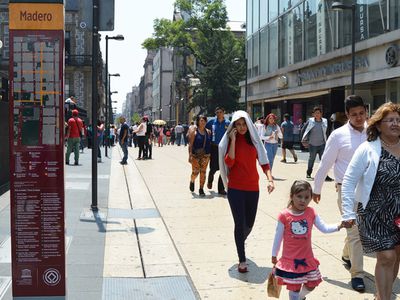How walk-first cities are saving lives

Prioritizing pedestrians over cars means everyone wins Cars prey upon the world?s most vulnerable humans?about 1.3 million people worldwide are killed each year in traffic fatalities, most of whom are in low-income countries. If cities continue to design wide, fast, auto-centric streets, the number of annual deaths is expected to nearly double by 2030.
But a new video from Streetsfilm looks at how even big car-choked cities are taking major strides to restore their citizens? right to walk by putting the pedestrian first?building out complete walking networks with routes that are shorter, safer, and more direct than those for drivers.
The examples are inspiring. Mexico City?s downtown was extensively pedestrianized in 2012, closing many busy streets to cars completely, and now a network of wide sidewalks and bike lanes provide options for non-drivers. Perhaps most impressive is Chennai, India, where the local government has completely shifted its fiscal priorities to allocate 60 percent of its transportation budget to walking. The video also adds some global perspective to the traffic death crisis, with data supplied by the Institute for Transportation & Development Policy (ITDP). Traffic fatalities claim the most lives in developing nations, where the majority of residents don?t even own vehicles. Cars are also the leading cause of death for teens worldwide.
Most wealthy nations have managed to reduce traffic deaths significantly in the past few decades, but...
| -------------------------------- |
| Modular artificial reef system by Alex Goad |
|
|












